#History of Tea Drinking In India
Explore tagged Tumblr posts
Note
Hello can you write some headcannons where dazai from bsd has a Indian wife thank you
Hello thank you for this request anon. I really appreciate it. So here are some headcannons for dazai with an Indian wife.
Masterlist
Dazai's Indian wife


Being his wife is going to a job itself. As much as he loves you he is a pain to look after
He will definitely be like learning Hindi and has heard a lot of scolding from you as well in it. Since he annoys you to death
Like if your newly married they you have like the whole Chuda and like the maganl sutra and all. He absolutely adores that.
If you're vegetarian he will take special care for you food yk since many people in India are vegetarian including me. So if that is the case there will be non veg in the house. So if he ever does eats he just eats outside.
As much ad bad he is at cooking he will try to learn how to cook some basic common dishes in India. Like Parathas and all. Cause u force him too
There will be mixed cuisines in your household. Yk like if you know how to cook and like it aswell then you would make like Japanese dishes but with a Indian touch like how our mother makes foreign food with Indian touch.
Dazai has ate every Indian dish you could make or have learned to make and appreciates you in every single one.
In your house Hindi music is compulsory like if your like music then in your house there will be light music all over the house.
At time you two dance to the beats and giggle at each other's silly moves.
There will be times like if Dazai comes home from the agency with like injuries (which is one a regular basis) you scold him every time. If he has a bigger injury like there is too much blood then you might as well scold him in Hindi.
You have made him try Chai. And after marrying you its become a normal habit of drinking tea with you in the morning.
He has learnt Hindi quite well and after some time he can also speak Hindi.
At first he had a terrible accent but it improved from time to time.
If you like reading Hindi books poetries then their will be a like reading sessions with dazai where you just both cuddle and you just read some books to him answering his every little question.
If you work at the agency then there will be like both of you are just talking casually in Hindi and Atsushi is like'wtf are they speaking?'
And if you have interest in history and politics like I do oh boy there will always be like those types of discussions in you household. Like you telling him something new about both Japan and India from mythology to history to civics everything is in the debate here.
Cuddling him to sleep is a mustttt cause it just feels so nice that you are giving your all to him. Listening to his voice just making your night as you kissed ever inch of his beautiful face.
Dazai on the other hand is just grateful to have some this caring. Some to talk to who just understands his very being. He would just be the sweetest.
He just loves everthing about you and tries his best every time. He wants to protect the very person who makes it a little more easier abd enjoyed to live from his miserable life. Who makes how makes him understand humans a little better.
If he comes late and finds you like asleep he would like cover you in you blanket like wrapping you nicely and cuddle you.
He would appreciate you everytime.
There is no doubt he does his suicide techniques abd always asks you on a lovers suicide and even whines after you say no.
He might be a little harsh sometimes yk like in early stage due to yk mafia thing but don't be mad at him he is quite the puzzle to solve so be patient with him.
There is not a single day complete if he hasn't pranked you or put your stuff away. He annoys you to death and teases you for it aswell.
He just enjoyed watching you get angry. Like the one time you were parking your car(cause he is not a good driver who even gave him a driving license)
"Sala kisne sikhaya hai in gadho go gadi laga b@&%&#₹@." You yelled as dazai just looked at you in amusement.
There was also this one time a girl was a little too close and dazai being dazai this mf asked her for a double suicide when you just went up to her like asked her to go since it was like the time for the agency but she won't buzz off. And you yelled.
"Ek ulte hat kar mara na toh tere plastic surgeon ko bhi surgery ki zaroorat pad jayegi. Bhag ya se!" And then she just looked at you weirdly when you just said like to buzz off in Japanese. While dazai is just watching the show rooting for you.
I feel like dazai might just be the kinda guy who would randomly dim the living room lights and turn on some classic romantic song and invite you to slow dance in the living room in your pyjamas at like ten at night and you just. waltz around with him for a while.
Between you and dazai there are both happy, comical and sad moments.
In sad moments if dazai is feeling low it's like a 6th sense to you by now. You always give him space if he wants to talk about it. If he doesn't you don't mind but just give him company like kissing him and like showing that you love him in every possible way. Which is also visa versa
In the end you are a happy married couple who is just as chaotic as much as both of you are cute.
Ps dazai is also scared from your ears twists when you scold him way to hard. He belives that you are even scarier than kunikida when you are truly mad.

#anime#anime x desi reader#desi reader#dazai osamu#dazai x desi!reader#dazai x y/n#dazai fluff#dazai headcanons#dazaiousamu#bsdxreader#bsd#bsd x reader#dazai x you#dazai#dazaireader#dazai imagines
62 notes
·
View notes
Note
Hello,can I get headcannons on How would the diaboys react to an indian s/o (btw I really love your blog)😄
You didn't specify characters so I've just done the Sakamakis :)
I'm not from india and I don't really know anything about indian culture so I had to look a lot up, sorry if anything is not accurate! I don't think that they would treat you any differently so this ended up being how would they react to certain things lol

SHU
Shu wouldn't react much when you initially tell him you're Indian, but you will probably have to fend off several kama sutra jokes before you put your foot down
Indian classical music is so different from the Western fare he grew up performing, so he'd be intrigued by any old songs you have to show him
Might even try to master some traditional instruments if he gets the opportunity
REIJI
He'd be very interested in India's history, especially since there are still so many ancient practices and languages alive for him to learn about
Probably the most likely to ask you to actually take him to visit India
And of course, knowing he's a tea maniac, how could you not introduce him to chai? He wouldn't drink anything else for weeks
AYATO
For some reason, I see Ayato as being really shocked that you're not Japanese - the first time he hears you speaking your native language throws him for a loop
("Ayato," you say, "I even have an accent when I speak Japanese..." and he's standing there as if you've told him you've got three tits)
To his credit he does try to engage in your culture, but his way of doing it is searching "cool funny indian things????" on YouTube
Don't bring him to any weddings because he will have tried to learn some terrible 2000s Indian pop music video choreography and he will perform it
KANATO
Kanato would love seeing you dressed up in your traditional clothing for any occasion - it's not the frills and pastel colours he's used to but he'd be obsessed with seeing you in a sari
It's a bonus if you can bake him some of your sweets, too - he was hesitant to try them at first since they're a little different from Japanese cuisine, but now he loves jalebi especially
LAITO
Laito is excited to get to know Indian culture - you're both Asian but it's so different, he wants to know aaall about you
Very into the movies and ugly-cries at them
When he meets your aunties they adore him, it’s kind of embarrassing how easily he charms them
And also kind of sad how they seem to like him more than you...
SUBARU
Of course Subaru's noticed that you look different from the other Japanese students at school, but he's never thought to ask you that much about India
Subaru has never been passionate about human food, but he surprisingly likes what you cook, especially the spicy curries from your region
You are yet to convince him to try any dancing, though
#shu sakamaki#reiji sakamaki#kanato sakamaki#ayato sakamaki#subaru sakamaki#laito sakamaki#sunday-yay#sakamakisaywhat#headcanons#diabolik lovers#sorry for giving ayato dumb bitch disease yet again
46 notes
·
View notes
Text
Dragon’s Blood:History, Uses, and Loki
It takes different forms: incense, oil, lotion, and even candles. Dragon’s Blood is a classic scent that many witches and pagans use for different purposes. However let’s take a dive into the classical scent’s history, so grab a cup of tea or your preferred drink, a snack and let’s go down the rabbit hole.
History
So where does Dragon’s Blood come from? What does it look like? Well, it appears as a deep dark red resin hence the name Dragon’s Blood. The resin can be farmed from specific trees/plants that produce the resin such as: Dracaena, Croton, Daemonorops, and Pterocarpus. If go back into Ancient Greece, China, Rome, Middle East and India, there are historical records of them utilizing this resin for a couple of purposes such as dyes, spiritual worship and medicinal practices to name a few purposes; it’s also worth noting that it was also used as incense and even paint! Today, it’s used for medical purposes, it’s believed it can quickly healer respiratory and digestive health ailments. It’s still used for incense, oils, paint and dyes still to this day!
Current Uses
The element of fire is said to represent this resin, and it can help with banishing, healing as well as protection. You can use it to keep insects away, relax, and even meditate. Some people still use this for medicinal purposes to help with preventing cancer, ulcers, anti inflammatory, anti diarrheal, anti diabetic and anti microbial.
Loki
Currently sitting on Loki’s altar, is a bottle of Sun’s Eye Dragon’s Blood oil. I heard a while ago by someone on the r/lokean subreddit that they use Dragon’s Blood for Loki. Me, being new to this (since April) am always looking for another thing to make him happy; even while I’m not the richest person. Now I couldn’t find much about the God of Chaos and the resin, well, other than products. What I can say that the element itself is a great selection for an altar set up. How I use it personally is right before I head out to work, I dab the inside of my elbows and behind my ears and combine it with a perfume (currently Michael Germain’s Sugarloaf) and say a prayer (it’s the Serenity prayer that references Marvel’s Loki; but it brings me comfort as I do need patience.) I will even say a prayer to the universe itself and Loki to help keep me patient and not to stress the hell out and to allow me and my boyfriend to be safe as he goes to work as he and I both deal with some wild shenanigans at our jobs.
I know this was a short one, but hey it’s still a post. Anyways I hope you enjoyed reading about Dragon’s Blood! It’s currently 3:00am where I’m at so I’m going to go ahead and post this since it is technically Friday morning. If you have any suggestions for blog posts, do comment or message me. I usually go on Tumblr at night so I may not answer until then. Thanks for reading and I hope you enjoyed it regardless of length!
References


#tarot#tarot cards#tarot deck#tarot witch#tarotblr#tarotcommunity#witchblr#witchcore#witchcraft#witchythings#loki#norse#norse runes#norse loki#norse gods#witch community#witch aesthetic#green witch#witches of tumblr#loki laufeyson#incense
3 notes
·
View notes
Text
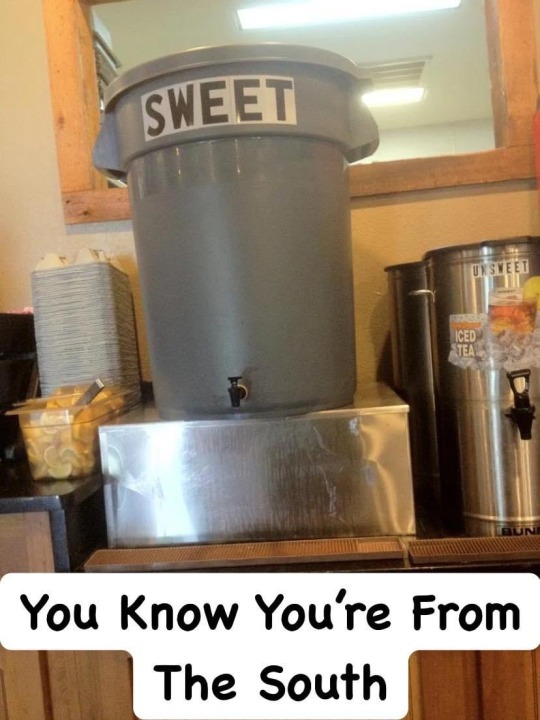
Sweet tea certainly can be characterized as a southern delicacy. One of the reasons why the southerness of this drink has been so strongly and clearly established is the way in which southern people place such importance on their traditions. Once sweet tea grew in popularity towards the end of the 19th century, it was quickly established as a southern tradition.
I haven’t been able to come across a definitive answer to why Sweet Tea is so popular in the South while not so in other parts of the country but below is a list of reasons I think Sweet Tea rules the South…
1) Iced Tea became popular in Southern Cookbooks into the 1900's and even more so during the time of Prohibition as the average person couldn't just walk into a speakeasy and order alcohol. Many who would normally drink alcoholic beverages were now looking for other beverages to switch to. Seeing as the South is much hotter than the North throughout the year iced tea should come as no surprise. Tea was a drink that many in the temperance movement gravitated towards and has actually been used throughout history by those attempting to transition their way off of alcohol.
2) Black Tea became a cheaper commodity during the years leading into the 1900's as India began to outproduce China in overall tea production. By World War 2 any access American's had to green tea (grown mostly in Japan/China) was effectively cut off leaving 99% of the tea consumed stateside to black tea. Couple cheap ice with cheap tea and sugar and you have the makings of an easy to brew drink that you could mass produce for pennies. We like to do stuff on the cheap in the South!
3) When you think of the South you think of a people that love tradition. It is a badge of honor to say you're from "The South." We love our food, we love our football, we love using the word y'all, we love our Sweet Tea.. I could go on forever but the point is when we find something worth liking we turn it into a tradition and pass it to our children and their children.
28 notes
·
View notes
Text
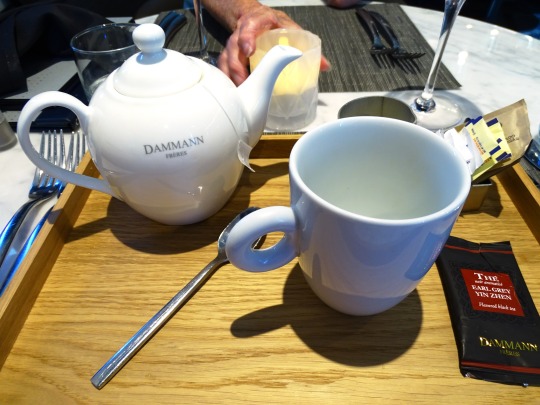
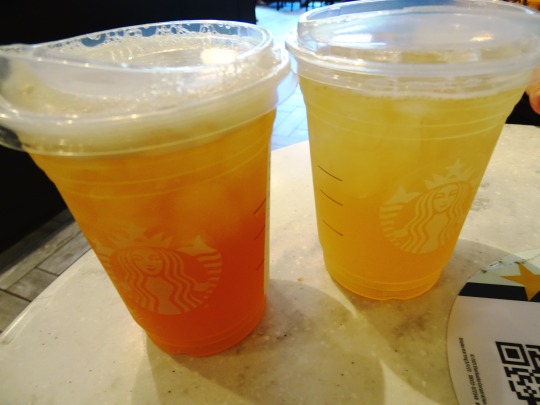
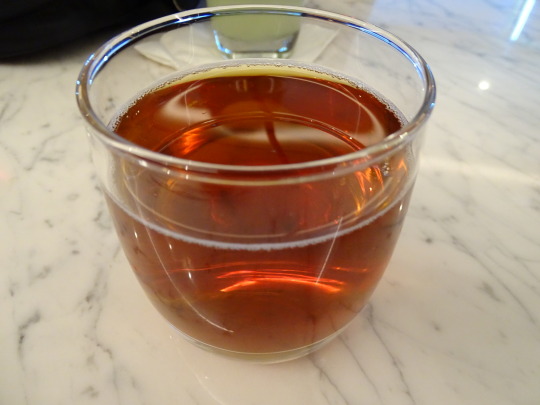






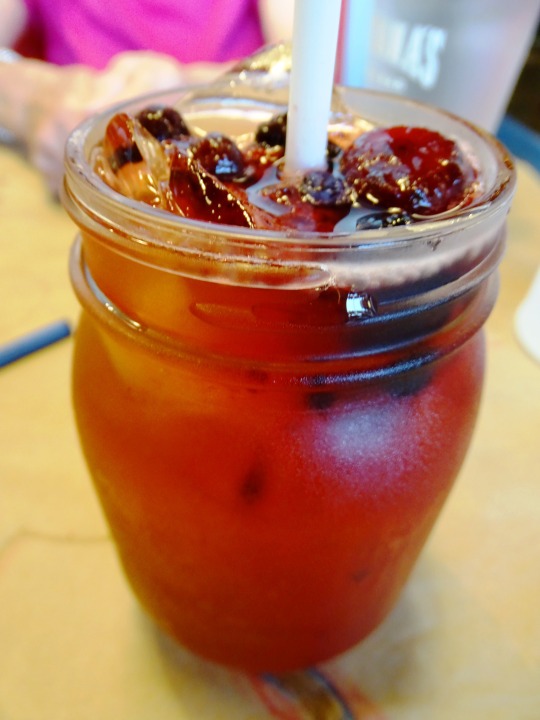

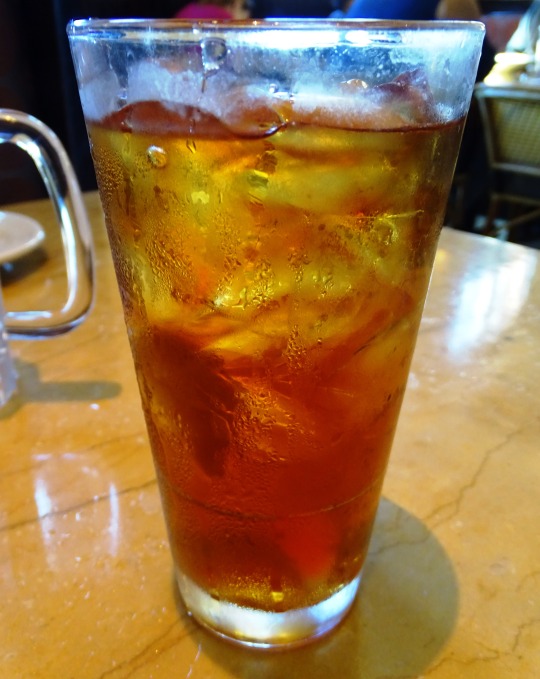
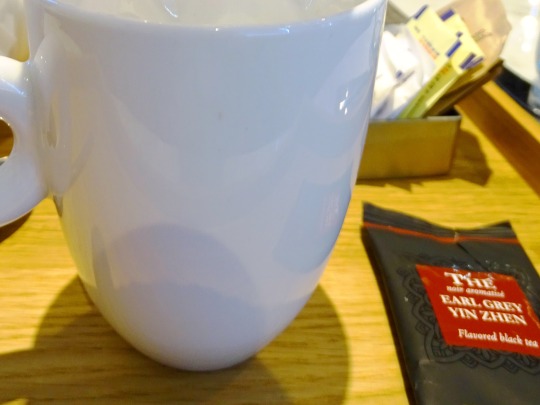
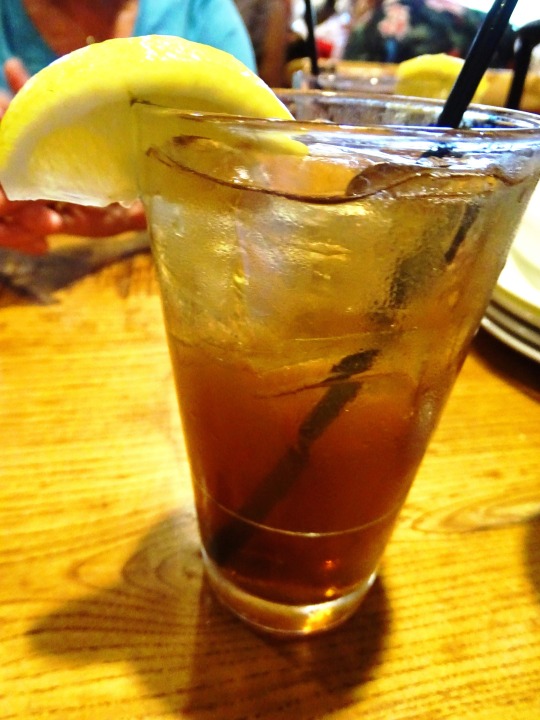
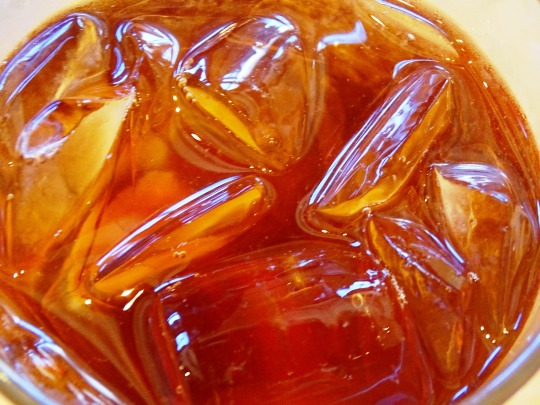
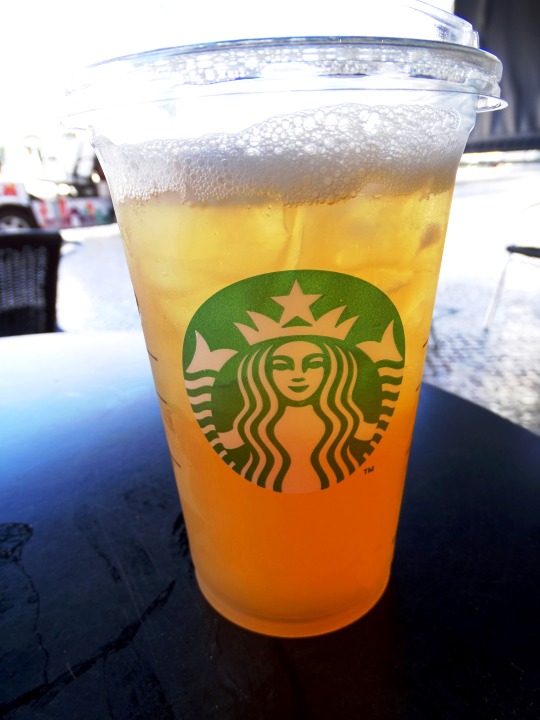
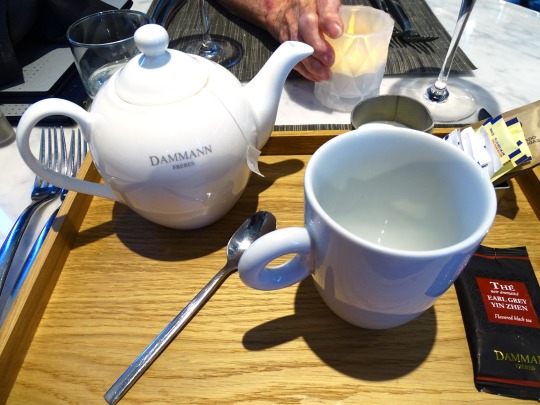

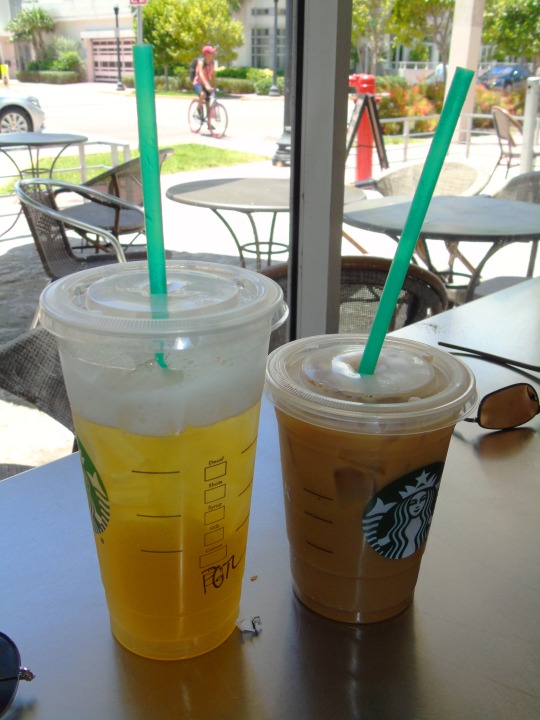



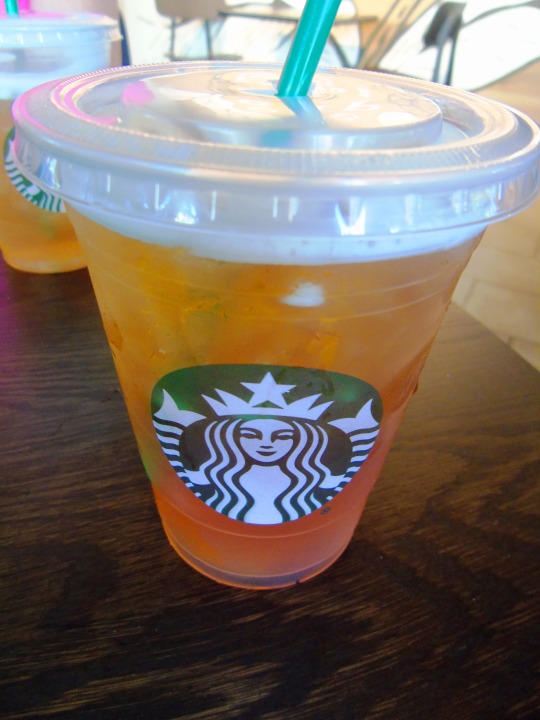
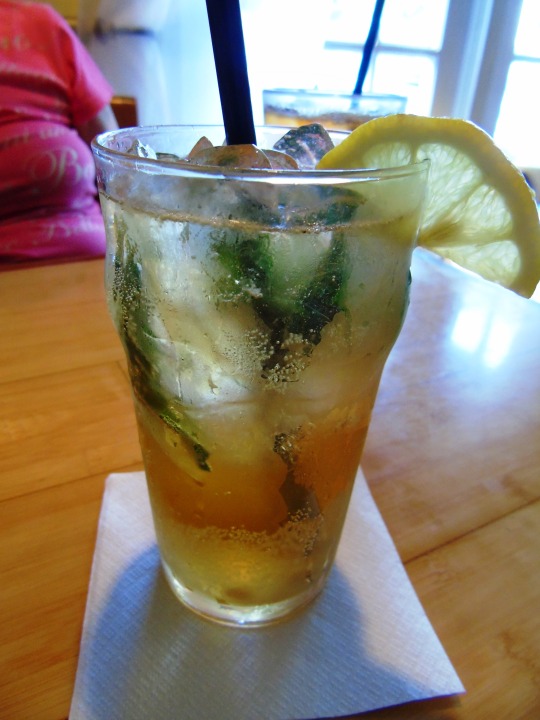

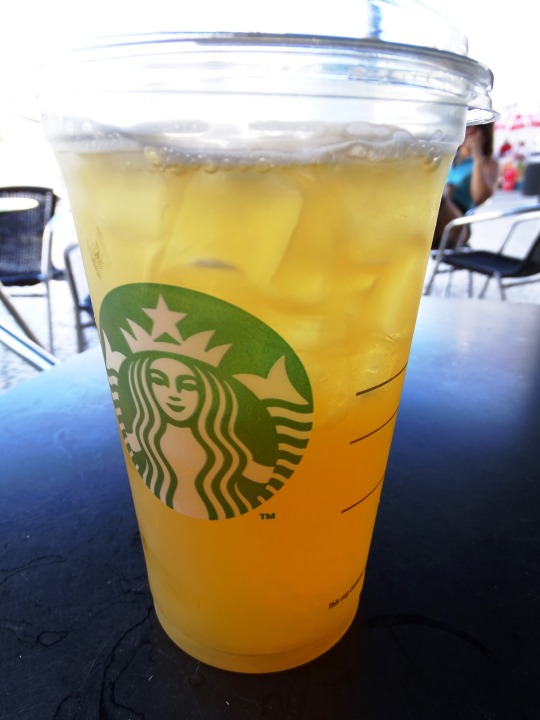
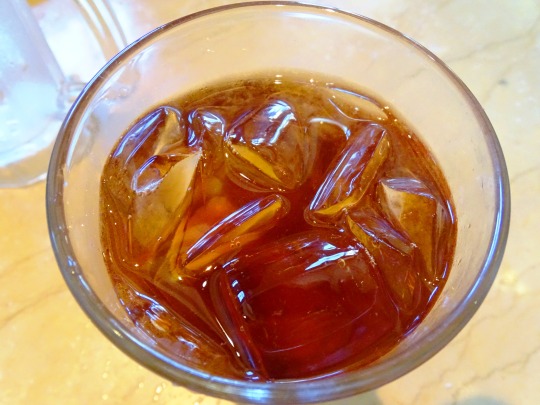

International Tea Day
While everyone loves a cup of tea, many of the workers and producers of that tea face poor conditions and pay. Help raise awareness and keep tea fair.
The tea industry provides millions of people around the world with cups of tea in the morning. One of the biggest producers of tea, India, recognizes the importance of tea in its communities and as a commodity for commerce.
However, much of the working conditions for those within the tea industry still need much improvement. If you think this holiday was about drinking tea, well think again! International Tea Day is all about the tea workers and bringing civil rights into action. Let’s see how this holiday came to pass.
Do you love a good cup of tea? While International Tea Day can certainly involve paying homage to tea, we should pay homage to those working in the tea industry. The best way to do this is by helping to raise awareness regarding their working conditions so they can be improved.
History of International Tea Day
The International Tea Day campaign was launched in 2005 by the trade unions, small tea growers and civil society organizations in Asia and Africa to address the issues of living wages for workers and fair prices for small tea producers.
The International Tea Conference in New Delhi came out with an International Declaration on the rights of workers and small growers to help regulate uneven competition, land ownership, safety regulations, rights of women, social security and living wages. Another organization, The Tea Board of India, proposed International Tea Day in hopes of it becoming an official holiday to the UN Food and Agriculture Organization.
This was proposed by chairman Santosh Kumar Sarangi in 2015. According to the chairman, the proposal of India was supported by countries such as Canada, the United States, European Union, Sri Lanka, China, Japan, Kenya, and Malawi. While the holiday doesn’t have official status, the goal of this holiday is to recognize the vulnerable situations that tea producers in India have with current living conditions and worker-related policies.
The day also focuses on deliberating on urgent issues such as residues, climate change, technology and trends on production and consumption in the tea industry. To observe this day, over 150 representatives from tea organizations gather and conduct a seminar to discuss the pervading problems the tea industry has as well as problems faced within their own country.
International Tea Day Timeline
2737 BC Tea is discovered as a beverage
Legend has it that Chinese Emperor Shen Nung is sitting beneath a tea tree while a servant boiled water for drinking. Some leaves fall into the cup and begin the practice of drinking what is now called “tea”.
1610 Tea comes to Europe
It is believed that the Dutch were the first to bring tea to Europe, just a few years prior to the introduction of coffee by Venetians.
1773 The Boston Tea Party occurs
With the intention of revolting against the high taxes levied by the British government without providing any voice, residents of Massachusetts throw tea into the Boston Harbor. “No taxation without representation” is the major complaint.
2004 International Tea Day is created
At the World Social Forum, International Tea Day is conceived and then celebrated the following years in New Delhi and Sri Lanka, then later in other tea-producing places like Nepal, Viet Nam, Bangladesh and others.
2019 United Nations adopts International Tea Day
After some years of advocating for its observance, International Tea Day is adopted by the United Nations General Assembly at the suggestion of the FAO Intergovernmental Group on Tea.
How to Celebrate International Tea Day
If you’re a lover of tea, then do some research about some of your favorite companies. Try looking up tea brands that support fair trade, and possibly switch to those brands to make a difference in the way you buy products such as tea. Use the hashtag #internationalteaday to help recognize it as an official holiday and educate others about the tea industry if you’re interested.
You could also use International Tea Day to try a variety of tea you have never had before. Matcha, for example, is highly popular as of late. You need to shop with care, though! The first thing you need to take a look at is how the Matcha has been produced and sourced.
You need to ensure that all veins and stalks have been removed so that there is not any bitterness and only the finest leaves should be used. Secondly, the color of the matcha powder is a significant factor. The greener the color is, the better. This is because the leaves are forced to overproduce chlorophyll because Matcha is shade-grown, which causes the vibrant green shade.
If the Matcha is yellow or brown in color, this is a sign that the leaves have not been properly shaded or that branches and stalks have been included. The price is the third factor to consider. Like most things, if you want quality, you can expect to pay a little bit more.
If something seems too good to be true, the chances are that it is. The feel of Matcha is also important. It should be a fine powder that is very silky. Last but not least, the taste is obviously a crucial attribute when it comes to quality. It should have a clean and naturally sweet taste.
Why not make some delicious baked green tea treats on International Tea Day and have a bake sale to raise money and awareness regarding working conditions in the tea industry? Green tea recipes are available in their abundance. People are actively searching for different ways to enjoy green tea. While green tea is delicious when simply mixed with hot water, there is nothing wrong with switching it up from time to time, especially on International Tea Day!
An easy and delicious recipe is Matcha Meringue Kisses. To make this you will need Matcha, sugar, egg whites, and powdered sugar. Begin by sifting together the Matcha and the powder sugar, and then whip the egg whites until they have soft peaks. Gradually add the sugar and whip until stiff peaks. Gently fold the Matcha into this mixture and then transfer to a pastry bag. Pipe the mixture into small kisses onto a baking tray and then bake for around an hour.
Or, why not make Green Tea Donuts? For this, you need green tea, honey, melted butter, milk, egg, salt, baking powder, sugar, and cake flour. You whisk the green tea, salt, baking powder, sugar, and flour. Add the honey, melted butter, milk, and egg, and then whisk. Use a pastry bag to pipe the batter into the mould. Then, simply bake the donuts for eight minutes. You can make your own glaze to go on the top – chocolate goes well!
Other delicious baked treats to try include green tea muffins, brownies and shortbread!
International Tea Day FAQs
What is International Tea Day?
Created to celebrate and pay tribute to the countries that produce tea to supply to the world, starting in India and moving to other places like Sri Lanka, Malawi, Uganda, Bangladesh, Vietnam and more.
When was International Tea Day first celebrated?
International Tea Day first got its start in 2004 when it was celebrated in New Delhi. It grew over the years and by 2019 the day was adopted by the United Nations General Assembly.
How to celebrate International Tea Day?
A great way to observe this day is by learning a bit more about the nations who produce tea for the world. Also, don’t forget to order a cup of fair trade tea for one, or take a friend out to enjoy a cuppa together.
What is the theme of International Tea Day?
The theme for this day devoted to tea producers changes each year, but some of the past themes have included themes such as Tea and Fair Trade or Harnessing Benefits for All from Field to Cup.
When is International Tea Day celebrated?
Taking place on May 21 of each year, International Tea Day originally took place on December 15 from 2005 when it was often only celebrated by tea-producing countries. It changed to May 21 when the UN adopted the day.
Source
#Earl Grey#Earl Grey Tea is my favorite tea#Computer tea Earl Grey hot#USA#I don't like coffee#I only drink tea#original photography#always unsweetened#Lemon Black Tea Lemonade#Tropical Ice Tea#Peach Green Tea#Lavender Ice Tea#Pineapple Black Tea#Strawberry White Tea#Peach Citrus Green Tea#International Tea Day#21 May#InternationalTeaDay#travel#vacation#Capilé#Portugal#Women are Persons By Barbara Patterson#Tea Earl Grey Hot#Spiked Texas Tea#Lemon Black Tea
2 notes
·
View notes
Text
A Tea Lover's Paradise: Exploring Assam's Tea Gardens
A Tea Lover's Paradise: Exploring Assam's Tea Gardens
Assam, renowned for its lush tea gardens and rich, flavorful brews, offers a unique and immersive experience for tea enthusiasts. The sprawling estates, steeped in history and tradition, beckon visitors to delve into the world of Assam tea, from its cultivation to its exquisite flavors. Here, amidst the verdant landscapes and serene surroundings, one can truly experience the essence of Assam's tea culture.
Contents
Exploring the Tea Gardens
The Tea-making Process
Tasting the Flavors
Beyond the Tea Gardens
Frequently Asked Questions
Conclusion
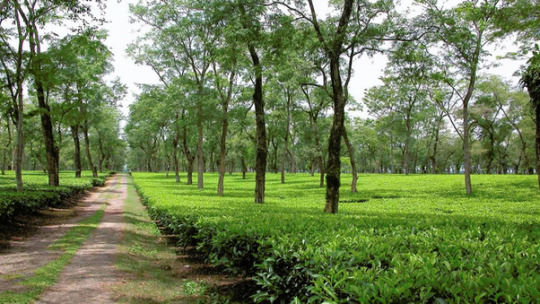
Exploring the Tea Gardens
A visit to Assam's tea gardens is a journey through time, where one can witness the meticulous process of tea cultivation and production. Spread across vast expanses, these estates are a sight to behold, with rows of tea bushes stretching as far as the eye can see. The air is filled with the sweet aroma of freshly plucked tea leaves, creating a sensory experience like no other.

The Tea-making Process
The journey of Assam tea from leaf to cup is a fascinating one. The plucking of the tea leaves is done by skilled workers, who carefully select the young, tender leaves that will yield the best flavor. These leaves are then withered, rolled, fermented, and dried to achieve the distinctive taste and aroma that Assam tea is known for.
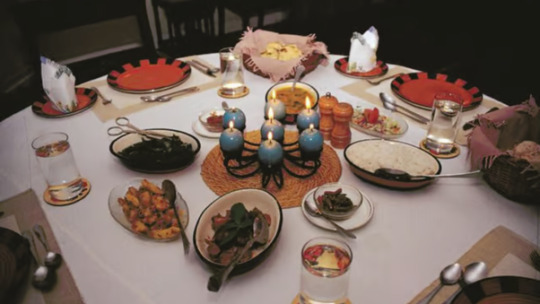
Tasting the Flavors
No visit to Assam is complete without indulging in a cup of its famed tea. The rich, malty flavor of Assam tea is best enjoyed with a splash of milk and a hint of sugar, although some prefer it black for a more robust taste. Whether you prefer it hot or cold, Assam tea is sure to delight your taste buds with its bold and invigorating flavor profile.

Beyond the Tea Gardens
While the tea gardens are the highlight of any visit to Assam, the state offers much more to explore. From its vibrant culture and rich history to its scenic landscapes and diverse wildlife, Assam is a treasure trove of experiences waiting to be discovered.
Frequently Asked Questions
1. What makes Assam tea unique? Assam tea is renowned for its bold, malty flavor and bright, brisk liquor. It is grown in the lowlands of Assam, where the hot and humid climate provides ideal conditions for tea cultivation.
2. How is Assam tea different from other types of tea? Assam tea is known for its robust flavor, which sets it apart from other varieties of tea. It is often used in breakfast blends and is prized for its strong, full-bodied taste.
3. Can you visit the tea gardens in Assam? Yes, many tea estates in Assam welcome visitors and offer guided tours of their gardens. These tours provide a fascinating glimpse into the world of tea cultivation and production.
4. What is the best way to enjoy Assam tea? Assam tea is traditionally enjoyed with milk and sugar, although some prefer it black for a more intense flavor. It can be enjoyed hot or cold, depending on your preference.
5. Are there any health benefits to drinking Assam tea? Like other types of tea, Assam tea is rich in antioxidants, which can help boost your immune system and reduce the risk of certain diseases. It is also believed to have anti-inflammatory properties and may help improve digestion.
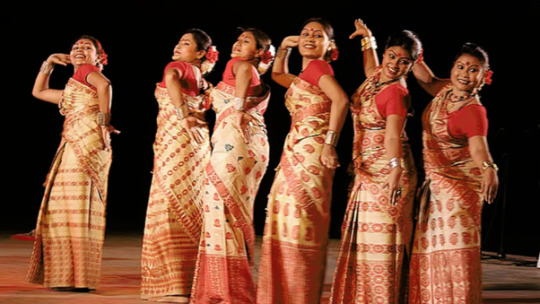
Conclusion
A visit to Assam's tea gardens is a journey into the heart of India's tea culture, where one can immerse themselves in the sights, sounds, and flavors of this beloved beverage. Whether you're a tea aficionado or simply looking for a unique travel experience, Assam's tea gardens are sure to captivate your senses and leave you with a newfound appreciation for this ancient and cherished drink.
2 notes
·
View notes
Text
The Art of Tea: A Journey through Culture, Health, and Flavor
Tea, the second most consumed beverage in the world after water, has a rich and diverse history dating back thousands of years. Beyond being a comforting drink, tea embodies culture, health benefits, and a world of flavors. In this article, we'll take a journey through the world of tea, exploring its origins, its impact on culture, its many health benefits, and the myriad of flavors it offers.
The Origins of Tea
The story of tea begins in ancient China, where legend has it that Emperor Shen Nong discovered tea around 2737 BCE when tea leaves blew into a pot of boiling water he was preparing. Over time, tea became deeply ingrained in Chinese culture, influencing everything from art and philosophy to medicine and daily rituals.
Tea eventually made its way to Japan, where it took on its own unique traditions, most notably in the form of the Japanese tea ceremony, or Chanoyu. This ritualistic practice celebrates the preparation and consumption of matcha, a powdered green tea that emphasizes mindfulness, aesthetics, and respect.
The British also played a significant role in tea's global spread. During the 17th century, the British East India Company began importing tea from China, making it popular in England and eventually leading to the Boston Tea Party in 1773, a pivotal event in the lead-up to the American Revolution.
Tea and Culture
Tea has had a profound influence on the cultures it has touched. In China, tea has long been associated with Confucianism and Daoism, and it has played a central role in various social rituals and ceremonies. In Japan, the tea ceremony is not just a cultural practice but a spiritual one, emphasizing harmony, respect, purity, and tranquility.
In British culture, the tradition of afternoon tea became popular in the 19th century, and it remains a cherished custom today, complete with finger sandwiches, scones, and a pot of Earl Grey or English breakfast tea.
Tea and Health
Beyond its cultural significance, tea offers a wide range of health benefits. The leaves of the Camellia sinensis plant, which produces black, green, white, and oolong teas, contain polyphenols, antioxidants, and other compounds that have been linked to various health advantages.
Antioxidants: Tea is rich in antioxidants, such as catechins in green tea and theaflavins in black tea. These compounds help combat free radicals in the body, potentially reducing the risk of chronic diseases like heart disease and cancer.
Mental Alertness: Tea contains caffeine, which, though less than coffee, can provide a gentle and sustainable energy boost without the jittery side effects.
Weight Management: Green tea, in particular, is believed to aid in weight management by boosting metabolism and promoting fat oxidation.
Digestive Health: Herbal teas like peppermint and ginger can soothe digestive discomfort, helping with issues like indigestion and bloating.
Stress Reduction: The ritual of making and sipping tea can have a calming effect, reducing stress and promoting relaxation.
Flavors of the World
Tea's diversity goes beyond its cultural significance and health benefits. Different types of tea are created through varying processes, resulting in a wide array of flavors.
Green Tea: Known for its grassy and earthy flavors, green tea is minimally processed, preserving its natural color and fresh taste. Varieties like Sencha, Matcha, and Dragonwell offer distinct profiles.
Black Tea: Black tea, with its robust and bold flavors, undergoes full oxidation. Varieties like Assam, Darjeeling, and Earl Grey showcase the diversity within this category.
White Tea: White tea is the least processed, resulting in a delicate, floral, and slightly sweet taste. Silver Needle and White Peony are well-known white tea varieties.
Oolong Tea: Falling between green and black tea in terms of oxidation, oolong teas are complex and nuanced. They can range from light and floral to dark and rich, with Tie Guan Yin and Da Hong Pao being notable examples.
Herbal and Fruit Infusions: Beyond the traditional tea types, there's a world of herbal and fruit infusions, including chamomile, peppermint, hibiscus, and more, each offering unique and delightful flavors.
Conclusion
Tea is more than just a beverage; it's a cultural treasure, a source of well-being, and a voyage of flavors waiting to be explored. From the serene Japanese tea ceremonies to the bustling British afternoon teas and the myriad health benefits, tea continues to captivate hearts and minds around the world. So, whether you're seeking a moment of tranquility, a boost of energy, or simply a delightful taste experience, a cup of tea is always ready to take you on a journey of culture, health, and flavor.
2 notes
·
View notes
Text
"The role of tea in fantasy novels is as multifaceted and complex as the drink itself. Tea can serve as a source of comfort. Tea can give characters a chance to discuss important topics. In the worst situations, tea can hide poison or a magical threat. Any way you pour it, tea is many fantasy books’ drink of choice, so I think it’s time we start the conversation.
In fantasy worlds, many authors use tea as a warm drink that readers accept into the world. Steeping Camellia sinensis leaves in water makes the beverage we know as tea. With tea’s long history, it is no surprise that the leaf variety, processing, and preparation change from place to place. The history of the drink also has sociopolitical implications that have literally impacted the well-being of multiple nations. For All the Tea in China: Espionage, Empire and the Secret Formula for the World’s Favourite Drink by Sarah Rose offers up one such international incident when a Scottish industrial spy stole tea from China in the 1800s for the East India Company. This single moment in history is just one of the many times when the creation and distribution of tea was marred by betrayal and greed."
#THE COMPLEXI-TEA OF TEA’S ROLE IN FANTASY NOVELS#TEA’S ROLE IN FANTASY NOVELS#Can’t Spell Treason Without Tea: A Cozy Fantasy Steeped with Love by Rebecca Thorne#The Oleander Sword by Tasha Suri#A Magic Steeped in Poison by Judy I. Lin#fantasy books#fantasy#tea#tea and fantasy
2 notes
·
View notes
Text
The Ancient Art of Bhang Lassi: A Mellow Cannabis-Infused Beverage from India

Introduction
For over a thousand years, the Indian subcontinent has enjoyed a unique and traditional cannabis-infused beverage called bhang lassi. This drink is made from a combination of milk, spices, and bhang – a paste created by grinding marijuana leaves and flowers. While it may seem like an intoxicating concoction, the preparation method of bhang lassi ensures that it delivers a milder effect compared to other cannabis products. In this article, we will explore the history of bhang lassi, its cultural significance, and the science behind its gentle impact.
The History and Cultural Significance of Bhang Lassi
Bhang lassi has deep roots in Indian culture and has been consumed for various purposes, including medicinal, religious, and recreational. It is often associated with the Hindu deity Lord Shiva, who is believed to have used bhang to attain a state of meditation and relaxation. During the annual festival of Holi, bhang lassi is consumed as a symbol of breaking social barriers and promoting unity among people. In addition to its spiritual significance, bhang lassi has been used in Ayurvedic medicine for centuries. It is believed to help treat various ailments such as fever, digestive issues, and anxiety. Moreover, bhang lassi is also consumed for its mild euphoric effects, which are considered less potent than other forms of cannabis consumption.
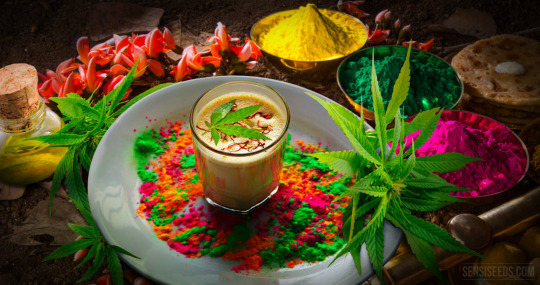
The Science Behind Bhang Lassi's Mild Effects
Despite containing up to an ounce of cannabis flowers and leaves, bhang lassi does not deliver an overpowering effect. This is because the preparation method prevents the full extraction of THC, the psychoactive compound responsible for the "high" experienced when consuming cannabis. When making bhang lassi, the first step involves creating a cannabis water tea. This process does not heat the bhang above the temperature at which THC acid becomes psychoactive. As a result, only a small portion of the THC is activated and released into the water. Furthermore, since cannabinoids are not water-soluble, the majority of them remain unextracted during this step. The addition of milk to the cannabis water tea further dilutes the concentration of THC. Fats in the milk help bind with the remaining cannabinoids, but the overall effect remains mild due to the limited extraction process. This intentional preparation method aligns with the cultural and medicinal purposes of bhang lassi – providing a gentle, soothing experience rather than an overwhelming high.
Conclusion
Bhang lassi is a fascinating example of how ancient cultures have harnessed the power of cannabis for spiritual, medicinal, and recreational purposes. Its unique preparation method ensures that the drink delivers a milder effect, making it suitable for various occasions and users. As interest in cannabis-infused beverages grows globally, the traditional art of bhang lassi serves as a reminder of the importance of understanding and respecting the cultural context of such practices.
#cannabis#cannabishistory#bhang#bhanglassi#indian culture#indianhistory#ancienthistory#cannabisrituals#cbd#feelgreatagain#budandtender
2 notes
·
View notes
Text
Celebrate International Tea Day: Taste the Charm of Tea Culture
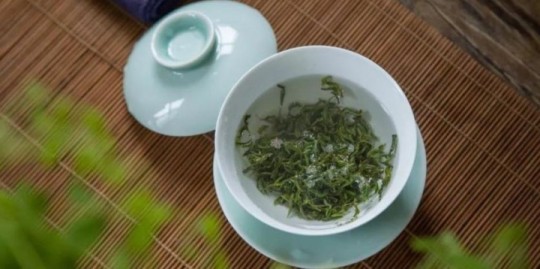
Today is International Tea Day, an important festival that celebrates tea culture. Tea culture can be traced back thousands of years, and today, tea has become one of the most popular beverages in the world. Whether in China, India, Japan, or the UK, tea plays an important role and has become an indispensable part of people's daily lives.
Tea is not only a beverage, but it also has many health benefits. Tea leaves contain rich antioxidants, which have positive effects on protecting heart health, promoting the immune system, and preventing cancer. In addition, tea can help people stay alert and focused, which is very helpful for studying, working, and daily life.
Tea culture is also a traditional art form. From the process of making tea to the ceremony of tasting tea, tea culture contains rich historical and cultural connotations. Different regions of tea culture also have unique styles and characteristics, such as Chinese tea art, Japanese tea ceremony, British afternoon tea, and so on. These tea cultures not only reflect people's love for tea but are also a part of people's lifestyles and cultural heritage.
On this special day of International Tea Day, we can taste different types of tea, learn about the history and traditions of tea culture, and gain a deeper understanding of the charm of tea. In addition, we can also contribute to protecting the environment and promoting social justice by supporting sustainable tea production and consumption methods.
Tea culture is not only an important cultural heritage but also a healthy, delicious,and beneficial drink. On this special day of International Tea Day, let us celebrate tea culture, taste different types of tea, learn about the history and traditions of tea culture, and support sustainable tea production and consumption methods to contribute to protecting the environment and promoting social justice. Whether at home or with friends, enjoying a cup of tea is an unforgettable experience. Let us feel the charm of tea together and celebrate International Tea Day!
#tea#green tea#chinese tea#qiandao silver needle tea#spring tea#organic tea#tea polyphenols#white tea#black tea#caffeine#International Tea Day#tea culture#health benefits#antioxidants#heart health#immune system#cancer#attention#concentration#traditional art form#tea-making process#tea ceremony#Chinese tea art#sustainable development#production methods#consumption methods#environmental protection#the charm of tea culture#tasting different types of tea#friends and family
3 notes
·
View notes
Text
Paper Ghost Prints










I always love the way the prints look after the second or third time running them through the press, I feel like the texture makes them much more interesting to look at.
A Less Personal Side to Tea Drinking...

Susan Stockwell (2000) Tea Country Collage
Susan Stockwell has used paper, paper products and other commonplace materials, such as rubber and wool, in a number of highly inventive ways. They are all centred on the notion of map as signifier of commodification, trade and economic power. In this piece she has stitched together used tea bags in a witty commentary on a peculiarly British obsession, tea drinking. At the same time it is a reference to the British Empire's former control of India and the legacy of Imperial exploitation.
Brief History
The history of tea drinking is far more vast than I initially expected, dating back to 2700BC, but it’s not surprising how much tea’s popularity has spread around the globe, and how much it has become part of people’s daily lives.
Tea fuelled centuries of imperial expansion, exploitation and industrialisation. But, cup by cup, it has also facilitated social unity and compassion and the latter is extremely relevant to me during times of isolation throughout Covid 19, changing the way I worked, studied and lived. Tea drinking remained consistent.
Because of these economic and social effects, the UK remains one of the top tea-consuming countries, downing approximately 100 million cups each day. Depictions in art and advertisements show how tea has become intertwined with British history and identity, uniting consumers in a shared national story while distinguishing social values in the many methods of sharing a cup.

Tea Plant (Camellia Sinensis): Flowering Stem Unknown Artist
As shown in this botanical drawing, the tea plant (Camellia sinensis) produces flowers, but its leaves are used to produce the drink. They are withered, dried, and oxidised in different ways to create the varied kinds of tea we know today. Tea naturally contains caffeine, which stimulates energy, and tannins.
The ingredients found in the tea bags I drink are slightly different to traditional tea, but they got me thinking about the different elements a tea bag is composed of such as textures and smells.
How can these elements be used to create work? Can I dissect tea bags and use the loose tea to draw or print with?
Tea was first cultivated in China, In the eighth century, tea spread to Japan via Buddhist monks. The country developed its own unique tea culture, formalising the aesthetic and philosophical ritual of the tea ceremony in the sixteenth century.
Tea and Colonialism
As global trade expanded, tea arrived in Europe in the early 1600s, and in England by the 1650s. 'The beverage soon became a necessity of life – a taxable matter,' scholar Okakura Kazukō wrote. England's subsequent commerce in tea lit the fuse of American independence, caused devastating social and economic effects in China, and drove the violent colonisation of India.

Indian Tea Plantation, an European Lady and Gentleman on Horseback Approach the Main House, Where a Number of People Await Their Arrival Unknown Artist
The above watercolour illustrates some of these oppressive hierarchies in the choreographed arrival of a European man and woman at a plantation.
The tea plant is indigenous to Assam, a fact that British speculators discovered only after several failed attempts to introduce Chinese plants to the area in the 1830s. Tea consumption in India predated the British arrival, but the introduction of industrial production and colonial control altered the landscape indelibly.
The monopolistic East India Company founded its colonial trade routes in 1600 and aggressively established commercial and then military control in India. Though chartered to join the spice trade there and in southeast Asia, they expanded their remit to transporting enslaved people from Africa and trading with China and the American territories.

A Ton of Tea (edition 1/3) Ai Weiwei (b.1957) Bristol Museum & Art Gallery
Ai Weiwei's 2007 work A Ton of Tea compresses this global history into a minimalist – albeit hefty – block, the weight of which we still carry today.
Tea and Sexism
Tea served at home garnered feminine associations, as men were freer to socialise elsewhere. Satirical prints like The Tea-Table used this setting – where women held power – to condemn gossip. (The stereotype continued in later images that poked fun at village gossips exchanging scandalous titbits over tea.)

Tea rooms catered to women hemmed in by social restrictions, especially as contemporary coffee houses were often dominated by men.
Thinking...
What has been perceived by me as a mere daily ritual, has a far more significant history and connotations to inequality and sexism than I'd ever imagined.
It will be important to consider these issues when I continue my making process, without totally swaying the initial ideas I had about what tea drinking means to me personally.
1 note
·
View note
Text
ART 225 Final Blog Post: Bob’s Java Jive
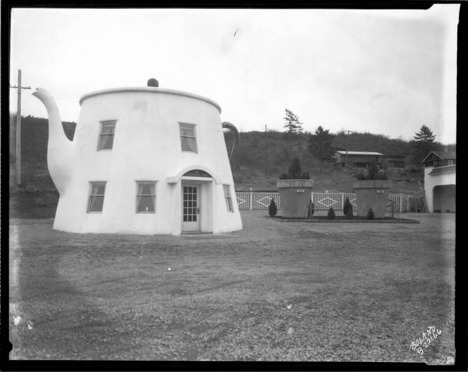
photo circa 1930
Located at 2102 South Tacoma Way, in Tacoma, Washington, this weird little building is not just a local attraction; it's on the National Park Service's National Register of Historic Places. Originally called the Coffee Pot Restaurant, it was designed and built by Otis G. Button, a veterinarian from Tacoma, in 1927, and opened in 1929. It was one of Tacoma's first prefabricated commercial buildings, with construction beginning on the tideflats and then individual sections moved to the property and bolted together on-site. It was one of a number of quirky object-shaped buildings erected alongside highways across the United States in the 1920s, intended to fascinate, both to draw new customers into the businesses housed within, and—in a time when speed limits were not standardised and signage was infrequent—to encourage drivers to slow down in order to get a better look at the sights. Unlike the three-story gas pump station next door or the giant lemon down the street, however, this one has stayed standing for almost a century at time of writing.
❗ BULLETIN: ROBBERY The Coffee Pot was robbed for the first time in November of 1936.
A change of ownership and a change of footprint took place in 1940 when Harold Elrod purchased the property and added a dance hall to the building. Elrod also obtained a liquor license and added a bar, though it was rumoured that the place had contained a speakeasy during the last years of Prohibition, so he may have just been legitimising a well-established tradition of drinking while adding a new tradition of dancing. With more space came larger crowds, and with a dancefloor came music. This kicked off the building's long history of musical gatherings.
❗ BULLETIN: ROBBERY It was robbed again in December 1945.
❗ BULLETIN: ROBBERY Robbed again in June of 1951. The Tacoma Public Library's notes on the location indicates that "yeggs loot[ed] safes here." Fun fact: "yeggs" was a slang term for a burglar or a safecracker and is thought to come from a bank robber who used the alias John Yegg. According to a source quoted by Ray City History Blog, John was "said to have been the first safe-cracker to use nitro-glycerine as an adjunct to the prosecution of his art," and subsequent crimes began to be referred to as being perpetrated by "yeggmen." A bit of broader and more language-based history mixed in with this local stuff!
In 1955, Bob Radonich purchased the building and renamed it the Java Jive. The name was suggested by Bob's wife Lylabell, who was inspired by a popular 1940 song of the same name performed by The Ink Spots. Lyrics from the song include, "I love coffee, I love tea; I love the java jive and it loves me!" Roadside America notes that Bob "made the Jive loosely Polynesian-themed," adding a "Jungle Room" and decorating with artefacts collected during his tour in India, Madagascar, and other places white Americans found exotic at that time. He also, in true fifties fashion, kept two chimpanzees named Java and Jive in a glass cage for customers to view. (The monkeys drew animal rights protests and other drama over the years, so Bob would eventually remove them from the establishment, sending them to "live with some friends.")
❗ BULLETIN: FIRE In April 1962, the fireplace caused a bigger fire than it was supposed to.
Until 1969, South Tacoma Way was known as highway 99, a main thoroughfare through the city, and "people would drive by and be lured in by the quirky shape of the building, then stay for a beer and the house band," as South Sound Magazine put it in their 2019 article about the place. Then interstate 5 was built, right over the Jive, and highway 99 became just another surface street. Bob's daughter Danette Staatz recalls how, after that, "there wasn’t the same kind of traffic — and it hurt business."
Despite the highway situation, by 1972, the Java Jive was world famous. According to Danielle, that year, "we were gonna paint the ceiling, and you would have thought that we were going to take a wrecking ball to the whole building. Everybody was so upset, we haven’t been able to paint the ceiling since.” Why was everyone so upset? Because the ceiling is "absolutely smothered with signatures from people all around the world who have come to visit," and is thus an important part of the building's story, to be preserved rather than painted over.

unknown date; source
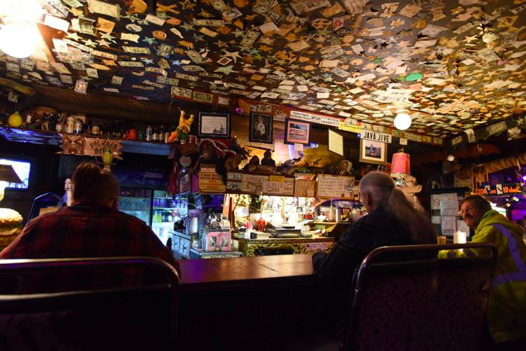
photo from South Sound, circa approx 2019
...
♬♪ INTERLUDE: music, culture, legacy
The city of Tacoma is ground zero for grunge music. Grunge is inherently quite political; as Wikipedia puts it,
Grunge lyrics are typically dark, nihilistic, wretched, angst-filled and anguished, often addressing themes such as social alienation, self-doubt, abuse, assault, neglect, betrayal, social isolation/emotional isolation, psychological trauma and a desire for freedom. ... [they] contained "... explicit political messages and ... questioning about ... society and how it might be changed ...". ... The topics of grunge lyrics—homelessness, suicide, rape, "broken homes, drug addiction and self-loathing"— contrasted sharply to the glam metal lyrics of Poison, which described "life in the fast lane", partying and hedonism.
Peter Andrijeski writes a bar-crawling documentation blog at seattlebars.org. When he started the blog, he began with Bob's Java Jive, which he visited in 1982. (The chimpanzees were still there at the time, living in the back bar.) Pete nods to the Jive's history as a happening spot for the local music scene: "Before they made in big, The Wailers played there several times, and The Ventures played as basically the house band. Harold Lloyd, Clara Bow, and Bing Crosby are all said to have hung out there during the early years."
You may recognise The Ventures as the band who performed the Hawaii 5-0 theme song. They and the Fabulous Wailers, as well as the Sonics, were part of the evolution of rock 'n' roll into grunge; garage bands who became national darlings and blazed a trail that led to Nirvana, Pearl Jam, Soundgarden, Alice in Chains, Mudhoney, Hole, the Smashing Pumpkins, the Foo Fighters...
Please Kill Me: The Uncensored Oral History of Punk is a book comprised entirely of quotes from people who were at the centre of the mainstream explosion of punk music while it was happening, as they recall what it was like to live that maelstrom. While these people mostly came from the East Coast, their experiences are not entirely dissimilar from what was happening in the Pacific Northwest at that time. I present the following quotes without further commentary.
Ed Sanders: The problem with the hippes was that there developed a hostility within the counterculture itself, between those who had, like, the equivalent of a trust fund versus those who had to live by their wits. It's true, for instance, that blacks were somewhat resentful of the hippies by the Summer of Love, 1967, because their perception was that these kids were drawing paisley swirls on their Sam Flax writing pads, burning incense, and taking acid, but those kids could get out of there any time they wanted to. ... Whereas someone who was raised in a project on Columbia Street and was hanging out on the edge of Tompkins Square Park can't escape. ... They're trapped. So there developed another kind of lumpen hippie, who really came from an abused childhood—from parents that hated them, from parents that threw them out. ... And those kids fermented into a kind of hostile street person. Punk types.
Wayne Kramer: Any time you take a political stance, especially when you start throwing around violent political rhetoric, you're guaranteed a violent reaction from the powers that be. There was an attitude that prevailed in the Detroit area, amongst parents, teachers, policemen, and prosecutors: "When is somebody gonna do something about the [band Motor City 5]? We cannot allow them to say what they're saying!" We were telling people at our shows to smoke reefer, to burn their bras, to fuck in the streets—it wasn't just a matter of "Well, they were a little too wild for the record industry," which we were, but it went beyond that. Peace and love worked in the realm of the music business, but once you went beyond that, to revolution... that's bad.
Dennis Thompson: Nixon and the smart boys in the green room back in the brain trust sat down and said, "Here's the easiest way to handle this damn thing. Just take away their party favors." The government figured it out. It was obvious. "These people do pot and hash and psychedelics and then they get revolutionary, and they come up with all these new ideas like 'Hey, let's change this world. And let's eliminate these fascist politicians!' Well, the smartest thing to do is give them what's been in the ghettos for a long time because that's been working pretty good there." All of a sudden all you can find anywhere you go is heroin. It's cheap, and there it is. So heroin became the next drug of choice, mainly because you couldn't buy a kilo of pot to save your soul.
In 1980, the future singer and guitarist for Girl Trouble met at Bob’s Java Jive. They would go on to become local legends. Bon Von Wheelie, Girl Trouble’s drummer, reflected on being a punk in the 80s during an interview for Northwest Music Scene: "Since Tacoma was a working-class town the people here weren’t really open to anything new, including punk rock hairdos and clothing. It is almost unbelievable to think about that now but for some reason it made people so mad they’d go after anybody who dared to look even a little out of the norm (which was baggy flare jeans and feathered hair). Having tight pants and a short haircut could get you in a fight faster than anything."
Nirvana didn't play at Bob's Java Jive, but they did hang out there in the mid to late 80s, and it was at a different venue in Tacoma that they first performed under the name "Nirvana." A local legend is that the band asked Bob if they could play a set at the Jive, but Bob didn't like their sound and he turned them down. Nirvana's bassist Krist Novoselic says that's an urban myth.
Unlike Nirvana, Bobby Floyd Radonich, the owner's son, was a frequent performer at the Jive. He was said to be an incredibly talented piano player, and to have a thousand songs memorised to play any time a customer made a request. The Tacoma News Tribune also wrote an article in 1983 about Bobby Floyd's presence at the piano bench, saying in the headline that the "Java Jive comes alive when [he] plays." Pete said on his bar crawling blog that on the night he was there, "Maestro" Bobby Floyd "seemed to play mostly 70s television themes, mixed in with Beatles covers and local high school fight songs." Pete called the bar and his experience at it "epic."
...

photo of the Jive’s menu from 1990, shared on their facebook page
The 1990 film “I Love You To Death” was filmed entirely in Tacoma, and features a scene inside Bob's Java Jive. Keanu Reeves plays alongside William Hurt as pothead cousins and would-be hitmen who are hired to kill a cheating husband; the deal is struck at a table in the Java Jive. South Sound Magazine notes, "You can play pool at the same pool table that Reeves did. He [allegedly] offered to buy the coffee pot building for $1 million and move it to Hawaii. [Bob] turned the offer down." (This urban myth may have been sparked by the fact that Bob later put the Java Jive up for sale for $1 million, despite the property and building being worth much less at the time. There were no takers, so he kept the place.) The Java Jive was also featured in “Say Anything” and “Three Fugitives” the year before, and a decade later it would appear in “Ten Things I Hate About You.”
By 1995, Bob was in his late seventies and health was failing, so his daughter Danette took over the Jive.
❗ BULLETIN: FIRE Another fire in April of 1996 caused some amount of damage and caused the Java Jive to be shut down for a time.
❗ BULLETIN: ... wait never mind In 1998, there was a fire in the apartment complex behind the Jive, but the building itself escaped the blaze this time! Whew!
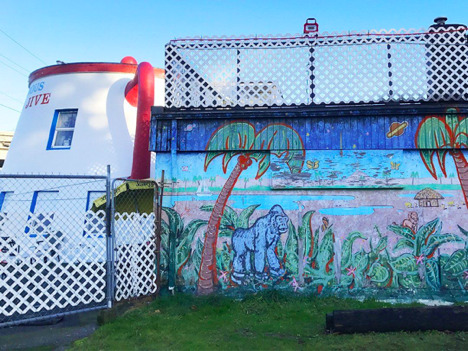
In July of 1999, Teddy Haggarty and Dan Richholt painted the above mural.
❗ BULLETIN: FINANCIAL TROUBLES In July of 2002, Danette spoke to the Tacoma Daily Index about the financial struggles she and her husband were facing due to lack of patronage. She promoted the event they were organising called The Big Hoopla to try to raise funds to keep the place open, with "dancers, live music, a juke box, pool, pinball and darts, as well as hot dogs and pop." Danette did not end up losing the Jive that year, probably in large part due to the event and the news coverage reminding Tacomans about their quirky little landmark and bringing in funding both from the event and from the likely boost in general patronage. Later that year, Bob Radonich died at 83 years old, with the famous coffee pot building still in the family.
2011 Yelp review: "This is the last Grit City hangout that hasn't been gutted and made into a fancy hangout for all the new transplant yuppies. Great vintage atmosphere and music venue. No hard booze here folks, just straight up beer and wine. Worth the visit."
2013 Yelp review: "the java jive is the most tacoma place in tacoma. a landmark, a tradition, and practically all that remains of our cultural past. built as a dine & dance joint in the 20s, then morphed into a rock club for the nascent garage/punk scene in the early 60s (think the sonics and the wailers), this roadside attraction is shaped like a giant coffee pot and like alice's wonderland, holds a mysterious variety of spaces inside. come here for a cheap pitcher of coors and a "jungle burger": a basic frisko freeze-style cheeseburger that's absolutely tasty and cooked to order. karaoke most nights, and occasional live music with a dance floor. just a great hang."


couple of my favourite show posters from facebook, circa 2014
In 2016 Huck Magazine added a video called Misfit City to their Huck Across America series on YouTube. This installment focussed on the “Grit City” music scene, with a huge showcasing of inclusive punkiness, and featuring a familiar little coffee pot shaped venue. In it, Hozen member Hozi says, "Tacoma is a misfit city, you know... I think that a lot of people feel comfortable to be themselves here in a way that you wouldn't necessarily feel in Seattle or Olympia because those places have so much of an identity. Here, you just... are who you are."
2016 show posters:
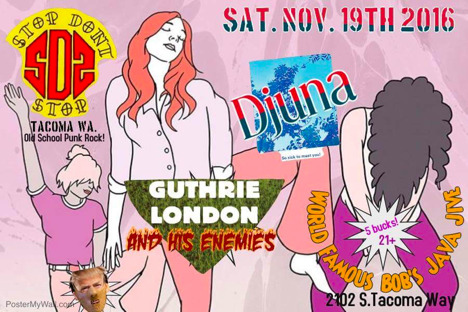

(2016 was recognised on the facebook page as a "shitty year")
The Jive has an overall rating of 4.5 stars on Yelp (as of December 2022). A lot of the naysayers seem to be disappointed that the coffee pot building was not a coffee shop (including one tourist who pulled over to take photos and then upon seeing the hand-scrawled sign on the front door decided not to go inside... but still left a three-star review based on their vague disappointment). Or that the dive bar atmosphere was not for them, to which I say: don't judge a fish by its ability to climb a tree. There are, however, quite a few comments about the state of the place around 2008–2015, with a handful of "this place used to be better" sentiments from people who had fond memories but seemed upset at the state of the place around that time. Luckily, the owners have done major renovations since then!
In 2019 they made a slew of announcements on facebook: they had installed a new karaoke sound system, acquired new arcade games ("a new dart machine that works!" and a new pinball machine), had the pool tables and the game area's carpet redone, bought a pretzel oven and hot dog steamer, installed security cameras for the first time to surveil the parking lot and surrounding area. Later that year, they got their wn library card! The Tacoma Public Library printed special edition library cards—a batch of only 3000—featuring the coffee pot building in its youth, before it had the colourful paint job and additional structure.
By this time, even non-natives were charmed by the place!
2019 Yelp review from a Kent resident: "I was very pleasantly surprised with how much I enjoy this place. Great karaoke, awesome people, wonderful atmosphere. I feel like this is a place where everyone is welcome and accepted which means a whole lot to me. I will most definitely be back and would absolutely recommend this spot to my friends!"
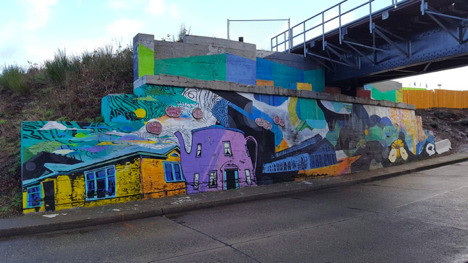
mural at the railroad bridge at 66th and south tacoma way, taken in 2019
❗ BULLETIN: GLOBAL PANDEMIC In March of 2020, the world stopped for a bit.
Renovations continued after the lockdowns. In June 2021 the exterior was repainted by Honest Guys Painting. Also around this time, Darren Blacketer and Chris Tipton were restoring Teddy Haggarty's murals on the extension of the building. In the summer of 2022 they installed a beer garden outside so that people could social distance and/or enjoy the warmth and sunshine. They even had a couple of bands play sets on the patio, and set things up for an outdoor open mic.
For a long time there was live music at the Jive every Saturday. Shows were all $5 as late as 2018, but by 2022 there are "monthly live music event[s]" and the price was usually $10 (though some shows cost less, and some were free). Between the pandemic and "den mother" Jenna Shrenk suffering a family loss that interfered with her gig-booking duties, the Jive has lost a bit of its presence in the music scene as a hot venue for local sound. These days it’s more of a karaoke/comedy bar, which frankly fits the vibe that Tacoma has going now. On Tuesdays there's open mic for poetry, singing, guitar or keys etc., and Bob's Comedy Jive is a weekly open mic comedy event on Thursdays.
2022 Yelp review: "The Java Jive is alive and well! Getting better every week. Cleaner, better beverage offerings while still keeping true to its gitchy legacy. Better beverages, better bathrooms!, better hours, better beer garden, better parking, better lighting, yet still the Java Jive!"
Bon Henderson said during her Tacoma News Tribune interview in 2021,
The people and stories [in Tacoma] are disappearing, brick by brick. I was born here. Things weren't perfect, and certainly not politically correct, and it was a tough town, but you learned to love all that. I want people moving here to know what Tacoma was all about. If we lose places like the Java Jive, they will never know. And that would be a damn shame.
Someone on Yelp called it "more like Bob's Java DIVE," and while that was probably meant to be an insult, it's accurate. The place is a dive. But that's kind of the point. This building and its history seem to emanate punk and grit and weirdness. It's been through hell, it's got a very mixed reputation, it's reinvented itself a few times, but for the most part these days it just kind of is what it is, the culmination of its history.
And if you're looking for coffee you can always go next door to KD'z Espresso shack...

PSYCH, IT'S CLOSED.
(Man, am I disappointed by the lack of coffee shops in this area!)
Bob’s Java Jive is currently open from 4pm to 2am, seven days a week.
2 notes
·
View notes
Text
South India Family Tour Packages by Travel Corp India: Unveiling Enchantment for Every Traveler

South India is a paradise for families seeking a blend of culture, nature, and leisure. From magnificent temples and serene backwaters to lush hill stations and exotic wildlife, this region is a treasure trove of unforgettable experiences. At Travel Corp India, we specialize in creating exclusive South India family tour packages, ensuring every member of your family has a memorable adventure.
Why Choose Travel Corp India’s South India Family Tour Packages?
We understand the unique needs of family travelers. Our tour packages are designed to offer:
Customized Plans: Flexible itineraries tailored to the interests of children, adults, and seniors.
Comfort and Safety: Handpicked accommodations and reliable transport services.
Enriching Experiences: Activities that combine fun and learning for families.
Highlights of Our South India Family Tour Packages
1. Tamil Nadu’s Heritage Trail: Where History Comes Alive
Explore Tamil Nadu’s timeless temples and vibrant culture:
Meenakshi Temple, Madurai: A spiritual and architectural marvel that delights all ages.
Mahabalipuram: Famous for its Shore Temple and stone-carved wonders, a UNESCO World Heritage site.
Chennai: Visit Marina Beach and the interactive Birla Planetarium for a family-friendly experience.
2. Kerala: Backwaters, Beaches, and Beyond
Kerala offers a mix of relaxation and adventure for families:
Houseboat Stays: Glide through Alleppey’s backwaters and witness traditional village life.
Athirappilly Waterfalls: Often called the "Niagara of India," perfect for scenic family picnics.
Wildlife Encounters: Explore Periyar Wildlife Sanctuary with guided safaris to spot elephants and exotic birds.
3. Hill Stations: A Breath of Fresh Air
The cool climate and scenic vistas of South India’s hill stations make them ideal for families:
Ooty: Take a ride on the toy train, visit botanical gardens, and enjoy boating at Ooty Lake.
Munnar: Explore tea plantations, trek to Echo Point, and let kids marvel at Mattupetty Dam.
4. Karnataka: The Land of Heritage and Adventure
Karnataka blends culture and fun for families:
Mysore: The illuminated Mysore Palace is a visual treat, while Mysore Zoo offers interactive wildlife experiences.
Hampi: Kids will be awestruck by the grandeur of ancient ruins in this UNESCO World Heritage site.
Coorg: Engage in coffee plantation tours and family-friendly nature trails.
Sample Family Tour Itinerary
Day 1-2: Chennai
Explore Marina Beach and visit the Government Museum.
Indulge in Tamil Nadu cuisine at family-friendly restaurants.
Day 3-4: Mahabalipuram and Pondicherry
Marvel at rock-cut temples in Mahabalipuram.
Stroll through the quaint French quarters of Pondicherry and visit Auroville.
Day 5-7: Kerala Backwaters and Wildlife
Enjoy a luxurious houseboat stay in Alleppey.
Visit spice plantations and take a jeep safari in Thekkady’s Periyar Sanctuary.
Day 8-10: Mysore and Coorg
Visit the Mysore Palace and Brindavan Gardens.
Relax amidst Coorg’s coffee plantations and waterfalls.
Best Time to Visit South India for Families
Winter (October to March): Perfect for exploring temples, beaches, and hill stations.
Monsoon (June to September): Ideal for witnessing lush greenery and indulging in Ayurvedic therapies.
Top Tips for Families Traveling to South India
Pack Smartly: Light cotton clothing for summers and light woolens for hill stations.
Plan for All Ages: Include activities like cultural shows, boat rides, and wildlife safaris to keep kids engaged.
Stay Hydrated: Ensure everyone drinks plenty of water, especially during outdoor excursions.
Frequently Asked Questions
1. Are these packages suitable for young children?
Yes, our itineraries include child-friendly activities like zoo visits, toy train rides, and beach outings.
2. What kind of accommodations are provided?
We offer a range of family-friendly options, from luxury resorts to comfortable homestays.
3. Can dietary preferences be accommodated?
Absolutely. We ensure that dietary needs, including vegetarian and allergen-free meals, are met.
Book Your South India Family Tour Package Today!
Embark on a hassle-free journey with Travel Corp India, where every moment is crafted to perfection. Whether it’s exploring majestic temples, cruising through serene backwaters, or enjoying scenic hill stations, our South India family tour packages promise a delightful mix of adventure, culture, and relaxation.
Make your family vacation extraordinary. Contact us now to plan your dream trip!
#holiday tours#best india tours#india travel tours#adventure trip packages#south india family tour packages
0 notes
Text
Herbal Green Tea: The Timeless Elixir for Wellness and Relaxation
Herbal green tea has lots of health benefits from losing weight to reducing stress and giving an youthful glow to anyone who drinks it.Herbal green tea can be drunk either in the morning or at night after dinner or even after an evening snack.Anyone experiencing stress ,fatigue ,restlessness can incorporate herbal green tea in their diet and notice that their tiredness is gone and their mood is uplifted every time after drinking herbal green tea .The unique part about the herbal green tea is its taste and the amazing herbs it has been blended with which are handpicked with caution.

Amazing flavors of herbal green tea
Moringa cinnamon tea,moringa ginger tea,lemon tea,peppermint tea eucalyptus leaf tea Papaya leaf tea,Guava leaf tea ,organic matcha green tea are some amazing flavors which are available in organic herbal tea and are power packed with various minerals and vitamins To kick start the with a boost of energy .
Why do they call herbal green tea a timeless elixir for wellness and Relaxation ?
Herbal green tea is often called a "timeless elixir for wellness and relaxation" because of its long history of promoting health and well-being. Rich in antioxidants, particularly catechins like EGCG, it helps combat oxidative stress, reduce inflammation, and support overall vitality Organic herbal tea is also known for its calming properties, thanks to L-theanine, an amino acid .
In which regions of India are the leaves used for making herbal green tea cultivated ?
Assam ,darjeeling ,nilgiri ,himachal pradesh kerala,karnataka,sikkim and meghalaya are some of the regions in India where the leaves used for making herbal green tea are cultivated because of the weather and high altitude of these regions .
Green tea recipes for children
Herbal green tea has several benefits for children as well although parents can not give a herbal green tea made from a powder to the children.They can prepare a tea using leaves of tulsi ,ashwagandha,mulathi mixing with honey for them .
In which country is Herbal Green tea popular ?
Europe, U.S.,Africa drink green tea.The Chinese are the largest herbal green tea drinking nation.People in China consume approximately 50 % of the total herbal green tea consumption in the world.Japan is the second largest green tea drinking country.
Conclusion
Organic herbal tea is an excellent option for anyone seeking a healthier alternative to regular chai, offering numerous benefits for overall well being. It can help maintain a balanced weight, support a healthy digestive system,and contribute to a more restful sleep cycle.By incorporating organic herbal tea into your daily routine, you can also promote glowing skin, as many herbal blends are rich in antioxidants that help nourish and rejuvenate the body. Whether they are looking to detox, reduce stress, or simply enhance your health naturally, organic herbal tea provides a holistic way to achieve their wellness goals.
0 notes
Text
DISCOVER GONDIA: A HIDDEN GEM OF MAHARASHTRA
Located in one of the most colourful states of India, the Vidarbha region of Maharashtra, Gondia is a place still un-hampered by the influx of tourists. Most Famously known as the ‘Rice City’ because of the number of rice mills, Gondia has beautiful locales, cultural sites, and a location that makes it a gateway from central to eastern India. Located near hills, rivers and forest, this city includes all the elegance, serenity and historical value that one can imagine. For the tourists who are in search of both business as well as leisure trips, Ginger Gondia on balaghat road is the place to go for.
Explore Gondia: Gateway to Nature and History
Gondia provides a variety of places luring visitors of different interests. The nature lovers can have a nice nature stroll along the Wainganga River with a serene backdrop of hills and forests. Of course, there are trekking trails that can be visited, history lovers can also find a number of temples, forts, and other ancient monuments. There are the historical, ancient monuments which give a glimpse of the history of Gondia like Nagra Fort, Kachargadh Caves etc.
For the wildlife enthusiasts, the Nagzira Wildlife Sanctuary situated at a distance of 65 km from Gondia offers an opportunity to spot different species of wild animals like Leopard, Tiger and Sloth Bear along with several others. The sanctuary proves to be the lieu of interest for those people who wish to get close to the natural attractions of Maharashtra. Gondia who would have thought is packed with unexplored beauty and excitement be it a weekend getaway or more sort of stay.
Ginger Gondia: Best Business and Leisure Hotel
While discovering many fascinating sights and interesting attractions of Gondia, Ginger Gondia on Balaghat Road presents you with comfortable and inexpensive accommodation. Known for its strategic location to the Gondia railway station and the airport, business and leisure travellers can benefit from a convenient location as well as quality services from the hotel.
Ginger Gondia boasts of being lean luxe to mean they ensure the luxury of the facility but simplicity when it comes to placing an order and staying at the place. Accommodation in the hotel includes stylish and sophisticated rooms to meet indeed every need you may have. Each room is equipped with a variety of amenities, including:Each room is equipped with a variety of amenities, including:
1.High-speed Wi-Fi to allow you to stay connected.
2. LED smart TVs with Satellite channels to entertain you
3. Television/ Mobile phone/”— A tea/coffee maker for personal convenience
4. Bottled drinking water for your comfort
5. A walk in shower to use after arriving from a long day of travelling.
Qmin: Indulge Your Taste Buds
Of course, no stay will be complete without some delicious meals that one gets to enjoy during their vacation. At Ginger Gondia, we have Qmin, an all-day diner where you can get anything you want to eat from their vast menu. For those who are craving for a filling, lip-smacking meal, Qmin will surely satisfy their palate; or even if one simply wants to have a quick pick-me-up snack, Qmin never disappoints.
Besides Qmin, according to the availability of a comfortable ambiance, The Bar at Ginger Gondia has various options of beverages for the guests to sip on. If you have closed a business deal in the morning and want to celebrate or if it’s evening and you have spent the whole day wandering the city, you can get yourself a drink in the plush surroundings of The Bar.
Seamless Business Spaces and Event Venues
Located in one of the most ideal business destinations in India, Ginger has well-facilitated banquet halls in Gondia that can be used for meetings, conferences as well as private events. With efficient organisational services, the Concord Hotel is preferred by corporate persons who want to work and have fun at the same time.
There is no better place to socialise, be productive or simply relax than Ginger Gondia that has all the necessary facilities and features to be at your service. Regardless of whether you are visiting for work or pleasure, the hotel makes it its responsibility to ensure that productivity of all its guests is well-enhanced and the comfort of the guest is well realised.
Travel Tips for Gondia
To make the most of your trip to Gondia, here are a few travel tips:
Best Time to Visit: Even though the weather in Gondia is good for tourism throughout the year it is best to visit this place during the winter season which is from November to February.
Local Transport: Concerning the local transport, the auto-rickshaw and buses can be hired to move within the city of Gondia.
What to Pack: For the tourists who want to enjoy the various sceneries of the place they should wear comfortable shoes and clothes depending on the time of the day they are going out; if they are going out early they should wear light clothes while at night one should opt to wear warm clothings.
Conclusion
Ginger will surely be the best fit out of all your options for the best budget hotels in Gondia, no matter if you are on a business trip or a holiday trip in Gondia. The amenities present in the hotel makes sure you have everything tucked within the fold of your sleeve, including mouth-watering cuisines, television, Wi-Fi, attractive tourist destinations within the city, and much more.
0 notes
Text
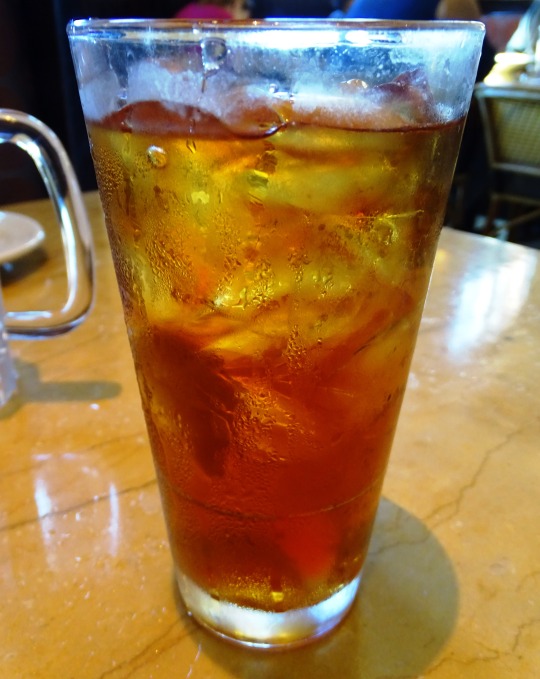

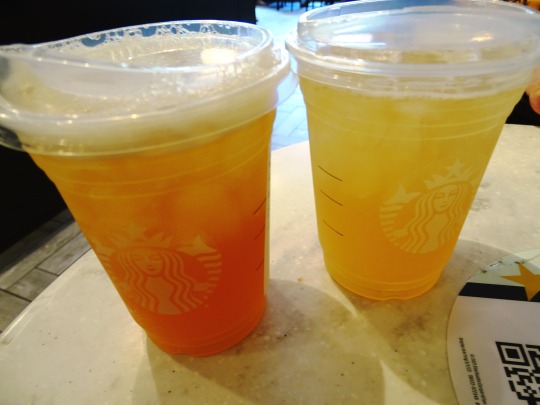

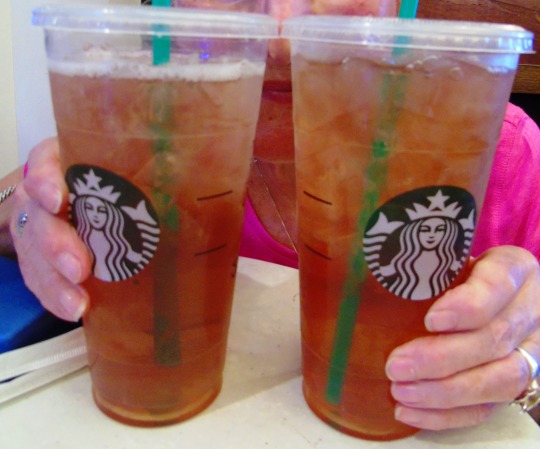
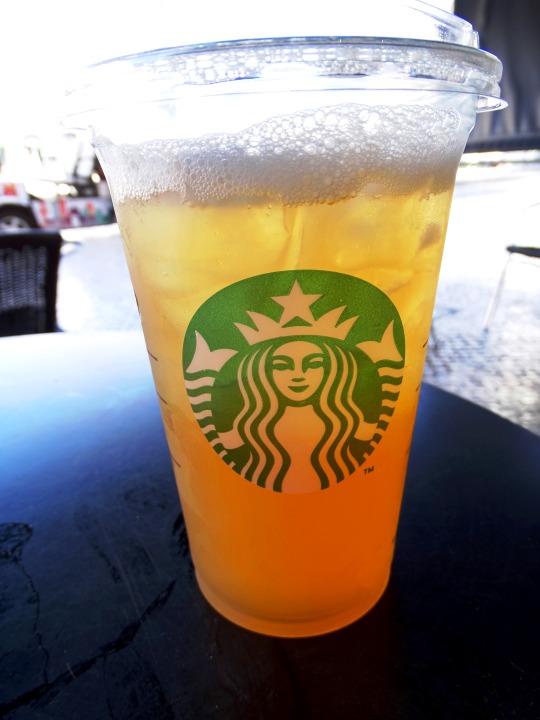





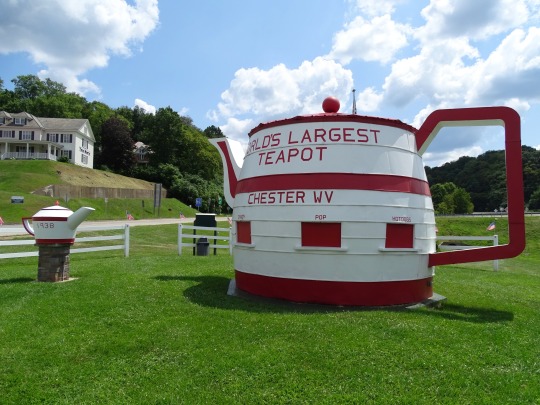





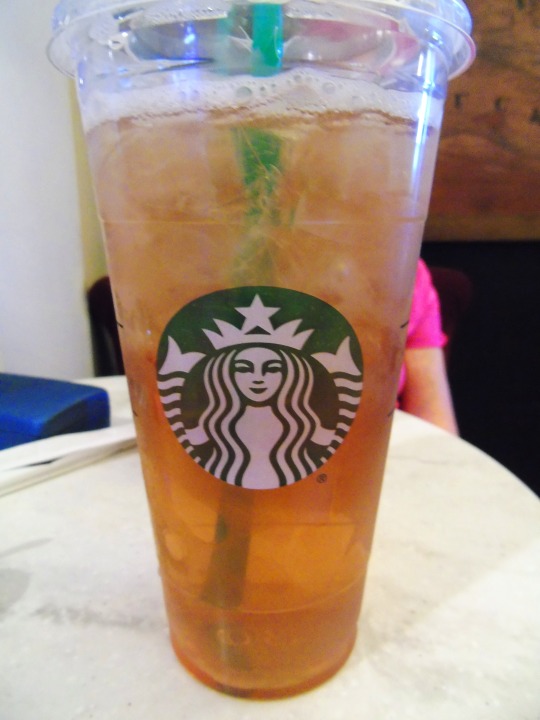
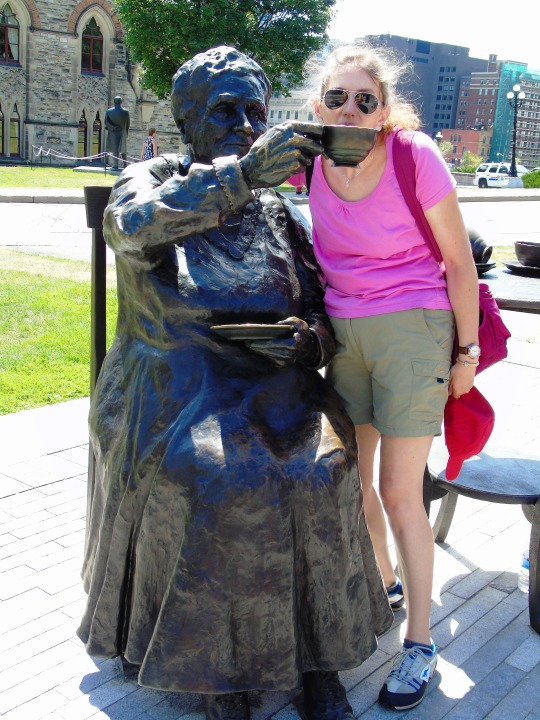

National Tea Day
Just because we dumped all that tea in the harbor, doesn’t mean we don’t enjoy the relaxing, warm drink. Visit a Fest-Tea-Val, or simply enjoy a steaming mug of tea.
That’s about the perfect sentiment we can think of for a nice cup of tea! Tea is a wonderful drink that comes in a wide variety of different flavors, each of them having a distinct personality and character. It has been used for everything from a simple morning libation to the central element of certain social and religious rituals.
This amazing drink is so important that taxing it was the final straw that ignited a fledgling country to declare a revolution! National Tea Day celebrates this fantastic beverage and the seemingly endless list of things it can do.
History of National Tea Day
The History of National Tea Day reaches far back into the world’s history but can be narrowed down to a place of origin that is surprisingly precise.
This place sits at the intersection of Latitude 29N and Longitude 98E, notable as the joining of NE India, Burma, China, and Tibet. Many mythological origins for tea also exist as well, some of them merely interesting and others quite gruesome.
In one period in China, the Emperor had ordered that all people of his nation would boil their water before drinking it. So it came to pass that the Emperor was sitting and drinking a simple cup of boiled water when leaves from a nearby tree blew into it, creating the first tea.
In another tale, a man sat meditating in front of a wall (for 9 whole years!) when he accidentally fell asleep. On waking, he was so disgusted with his inability to stay awake, which he considered to be a weakness, that he severed his eyelids and threw them to the ground where they sprouted into the first tea bushes. A little disturbing, perhaps, but utterly Asian in its style.
Regardless of its origins (which may be in dispute) the importance of tea cannot be understated. And anyone is strongly encouraged to research it since it would be impossible to cover it’s entire history here.
Now, it’s time to take a look at what tea is–and what it is not. Officially speaking tea is an infusion of the leaves of Camellia Sinensis, an unassuming evergreen plant that hails from Asia. Technically, what tea is not is anything that does not contain these leaves.
That means that, while infusions of herbs not containing these leaves may be referred to as ‘Herbal Teas’, they are not in fact teas at all. Only those infusions which contain the Camellia Sinensis leaves can properly be called tea. Considering tea is the second most consumed beverage in the world, second only to water, it seems that a little accuracy is in order.
On the other hand, as words and traditions evolve, many things have become known as tea, which so many people around the world enjoy, that it doesn’t hurt to be a little generous with the definition. And generosity is what National Tea Day is all about. Drinking, and sharing, a generous cup of tea.
Because it spans a variety of sources and cultures, a couple of different dates have been recognized as National Tea Day. April 21 is National Tea Day in the UK. The UN has put National Tea Day a month later, and another National Tea Day falls in the middle of December. There are even days for Iced Tea, Bubble Tea and Chai. Not to mention a whole month for Earl Grey Tea and Iced Tea.
It seems that celebrating Tea is a festivity that should be happening all throughout the year! And since tea is the most consumed drink in the world (after water) no one is even going to complain.
How to Celebrate National Tea Day
Drink a Cup (or Glass or Mug) of Tea
Literally hundreds of varieties of tea are in existence, from those that are gently dried and cured to those that go through complex processes that can include long stays in caves. So many varieties of tea exist that it almost defies the imagination! National Tea Day is the perfect time to try a few new ones.
Grab a Glass of Iced Tea
In some countries, tea is only considered to be authentic if it is enjoyed hot. However, other cultures have taken the idea of tea and turned it into a cold beverage. For instance, in the United States, iced tea is a common beverage that is served in a large, tall glass. It is often sold by the gallon in stores and, in the south (but almost never in the north!), it is made very sweet.
Whatever the case, the first order of business for National Tea Day is sitting down to enjoy a sip in whatever form is preferred.
Attend the Fest-Tea-Val in UK
Celebrated all throughout the United Kingdom, Fest-Tea-Val (festival!) Tea rooms, hotels, cafes and pubs all around the nation host special events, promotions and activities that are centered around the country’s favorite drink: tea. These events are often paired with worthy charities in order to provide financial support for them.
Host a Fest-Tea-Val
Those outside of the UK certainly don’t need to be excluded from all of the fun! Consider hosting a National Tea Day celebration at home, at work, or in the community. Simply gather friends or coworkers together and put on a spread of different varieties of tea that can be tried. This would also be a great time to call that friend who has the eclectic collection of teapots!
Take the Sustainable Tea Challenge
Since most tea bags are made of plastic, which isn’t great for the earth, many people are moving in the direction of using loose leaf tea or at least compostable tea bags. Some companies try to promote sustainability and eco-friendliness in the production of their tea, including:
Numi. Fair-trade, organic, and offsetting carbon emissions.
Yogi. Organic, recyclable/compostable packaging and gives back.
Pukka. Organic and donates profits to help the planet.
Source
#Earl Grey#Earl Grey Tea is my favorite tea#tea Earl Grey hot#lavender tea#Peach Green Tea#Peach Citrus Green Tea#Pineapple Black Tea#travel#always unsweetened#Tropical Ice Tea#tea mug#tea pot#drinking#USA#National Tea Day#NationalTeaDay#restaurant#lounge#vacation#original photography#Purple Haze Lavender Farm#21 April#Capilé#Portugal#Canada#Women are Persons By Barbara Patterson#Ottawa#World's Largest Teapot#Chester
3 notes
·
View notes